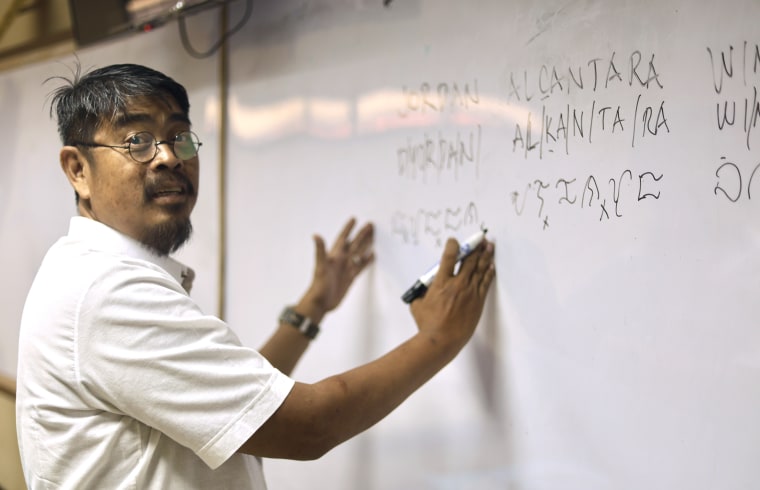One glance at Filipino social media and you will find a recurrent set of waves, twists and inverted heart shapes. They’re more than just symbols — they’re part of the 17-character writing system called Baybayin, which is making a comeback after hundreds of years.
The ancient script can now be found on streetwear and trendy booze, in card games and tattoos and even on Filipina American singer H.E.R.’s attire.
When the Spanish colonized the Southeast Asian archipelago, they instructed Filipinos to use the Latin alphabet, and Baybayin, the written component of Tagalog, the national language of the Philippines, fell out of use. But over the past two decades, young people, artists and many among the Filipino diaspora are looking to re-establish a sense of cultural pride, and they have started a movement to bring it back to life.
For Jay Enage, 50, one of the few Baybayin instructors in the country, the language is a crucial puzzle piece to Filipino identity.
“The writing is visual. So that’s why it’s powerful. Because when you write something, what you say becomes record, it becomes document, and it becomes permanent,” he said.

Enage, who has been teaching and advocating the language for 13 years, said he sees a real enthusiasm for it among the youth. High school student Nyrene Paranga is one of many youths seeking out ways to learn Baybayin and make it more accessible to her peers. She said it means a lot to her to help organize a Baybayin workshop at her school.
“We hope that Baybayin will be part of the curriculum for high school and maybe elementary, because it can be incorporated with our mother tongue,” she said. “I mean, you get English subjects instead of Baybayin classes, and recently our school actually adapted Korean language instead of Baybayin.”
But it is an uphill battle to find resources, Paranga said, as a national bill that would make Baybayin a requirement in schools’ curricula remains stalled in the Senate. Ethnic…
Read the full article here





